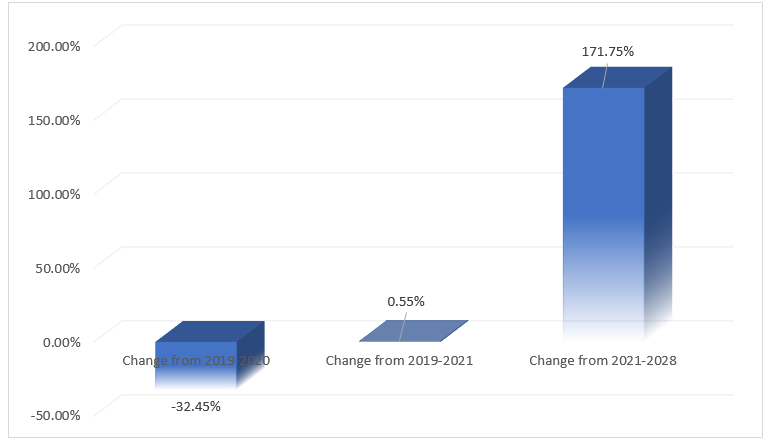Unveiling the Evolution of the Fitness Industry: From Ancient Greeks to High-Tech Home Gyms
- Himanshu Patni
- June 24, 2023
- BLOG
- Evolution of the Fitness Industry, Evolution of the Fitness Industry Share, Evolution of the Fitness Industry Size, Evolution of the Fitness Industry Trends
- 0 Comments
Any individual, business, or organisation that prioritises physical activity, good health, and general body upkeep belongs to the fitness sector. Gyms and fitness centres, personal trainers, manufacturers of fitness gear, distributors of food and supplements, makers of orthotics, retailers of clothes, and manufacturers of sporting items could all be included.

Fitness Industry Change in Revenue from the Pandemic to 2028
Market Drivers
High-Tech Home Gym Equipment Brands are investing in technological solutions that can produce a more
individualised and upscale gym experience at home as people spend more time there.
Access sample report (including graphs, charts, and figures):- https://univdatos.com/report/digital-health-market/
Digital Fitness Will Continue to Grow It is expected that the digital fitness industry would grow. The experience of at-home exercise will advance as more fitness firms come up with inventive ways to engage customers. Digital fitness enables users to exercise from any location. All of a sudden, you have access to an online workout plan and personal trainer. The optimal approach to move your body doesn’t require any consideration or research on your part. The moment you press a button, it is handed to you. You can select a fitness platform to suit your demands, ranging from cardio and calisthenics to Pilates and bodybuilding.
Changing Consumer Behavior There are many factors at play as the fitness business transforms. Consumer habits and behavior are changing, which is one of the key driving factors. Numerous factors affect consumer behaviour. The internet, for instance, significantly affected how consumers view brands, and the coronavirus impacted consumer priorities.
Top fitness industry trends
The Future of the Fitness Industry
JaxJox, a provider of fitness technology, raised $10 million in investment in the second part of 2020. The AI-powered smart home gym monitors and raises your wellness score. The solution comprises a rotating 43-inch TV as well as weight-adjustable smart dumbbells and kettlebells. It is currently compatible with Apple’s HealthKit and will soon be GoogleFit-integrated.
Living in a Post-COVID World
The future might see some kind of a small gym capacity, social isolation, and strict sanitary regulations. On the other hand, group classes and the capacity to interact with others face a newfound admiration. The impacts of isolation have been felt by many people, and the need for community is obvious. Fitness brands will need to keep building upon and leveraging their network as it expands beyond simple physical activity. It’s a location to socialise, unwind, and have fun.
Digital Health Market Size, 2021 to 2030 (USD Billions)
The global market for digital health was estimated to be worth USD 270.60 billion in 2021 and is anticipated to grow to USD 1354.68 billion by 2030, expanding at a CAGR of 19.2% from 2022 to 2030.
Conclusion
Since the time of the Ancient Greeks, the fitness sector has advanced significantly. Fitness trends have come and gone over the years as the fitness sector has officially entered the mainstream. Fitness firms will need to adjust to consumers’ increasing needs even though technology continues to be at the centre of innovation and change in the industry.
Author: Bobby Singh


